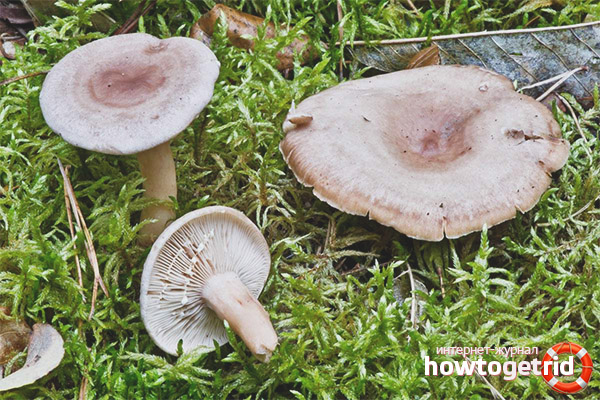The content of the article
Orange milkmen are considered to be an inedible type of representatives of the russula family. These fruiting bodies are regular lactea that secrete caustic juice. Despite the pleasant smell emanating from mushrooms, these instances are inedible. Their consumption in food can be unpredictable. Even in folk medicine, such mushrooms are not used. We will analyze all aspects and characteristics associated with the orange representatives of the family.
Description
- The hat in diameter can reach 8 cm. However, in fact, the top does not grow more than 6 cm. The base height is on average about 5 cm. With a width of 2 cm. Plates are located on the inside of the hat. They are not too wide, but not narrow, they are located to each other at a close distance, slightly half-up. The plates contain yellow spore powder.
- In young growth, the tops stick out. However, over time, they straighten out and acquire an indented format. In the end, the mushroom hat becomes like a funnel. The upper part has an orange peel. It is smooth, matte with a slight sheen in a chaotic manner. When grown in moisture, it becomes slippery.
- Leg on cylinder format. Narrows to the bottom. In young animals it is brightened, similar in color to a hat in shade. When the fungus grows and becomes ripe, its base gains a void inside. These mushrooms secrete a lot of juice, which is notable for its density. It is sticky, caustic, painted in a light tone, does not change color when weathering. The pulp with fibers, smells like orange.
Growth
- Fruit bodies prefer to live in larch. They can be found growing in proud solitude or in small groups. Fruiting begins in the summer, ends in the autumn season. Mycorrhiza forms with deciduous trees.
- This variety is inedible. Moreover, according to some mycologists, orange representatives of the family are considered even slightly poisonous. There is no danger to life, but consumption leads to disorders of the digestive tract.
Brownish milkman
- The mushroom is classified as conditionally edible. The top in diameter reaches 12 cm. Maximum, but there are specimens on average 5-10 cm. The hat is painted with a chocolate shade, it quickly breaks. The edges are bent, the apex itself becomes depressed over time. Feels velvet.
- The base can reach 11 cm in length. It is painted with brown, beige or white. The format is cylindrical. The plates on the inside of the hat are closely spaced, stained with ocher or pink pigment.
- The soft part breaks quickly, it is very fragile and white. If a slice is made, then during weathering the flesh will change and become pinkish in this area. Smells delicious berries, no bitterness. It is necessary to search for copies in Europe. They bear fruit from mid-summer to early fall.
- This mushroom is considered conditionally edible, since it is eaten more often than other varieties. Instances are subjected to salting and drying. However, such mushrooms are consumed in the vastness of our homeland; they are not eaten in European countries.
Faded milkman
- Another conditionally edible specimen, which grows up to 9 cm in diameter. The top is painted with lilac, gray or purple. It may be gray-brown, but over time it becomes whitish. It protrudes slightly, then flattened.
- In the central part, the apex is concave, dark. Along the edges that bend inward, light.The skin is not straightened, it feels slightly moistened and sticky, leaves and branches are constantly glued.
- The base bends, but can be even. It grows up to 8 cm in height. It is painted light brown or white, slightly lighter than a hat. According to the format of the leg, like a cylinder.
- The soft part is grayish or whitish. Juice stands out from it. It is fragile, can break when pressed or mishandled. The plates are close, they are thin and speeded up. Pigmented with an ocher or cream tone, when pressed, they turn gray.
- You need to look for mushrooms from the end of summer to the middle of autumn. They live in a mixed strip and larch. Often found near birches, areas near the swamp are considered to be favorite places.
In today's material, we studied the orange representative of the family, as well as other specimens related to the lactic. Orange fruiting bodies are not consumed, which cannot be said about their associates (conditionally edible). The main thing is to be able to distinguish quality specimens from everyone else so as not to pick up a basket of unnecessary fruiting bodies.
Video: Orange Lactarius (Lactarius porninsis)











Submit